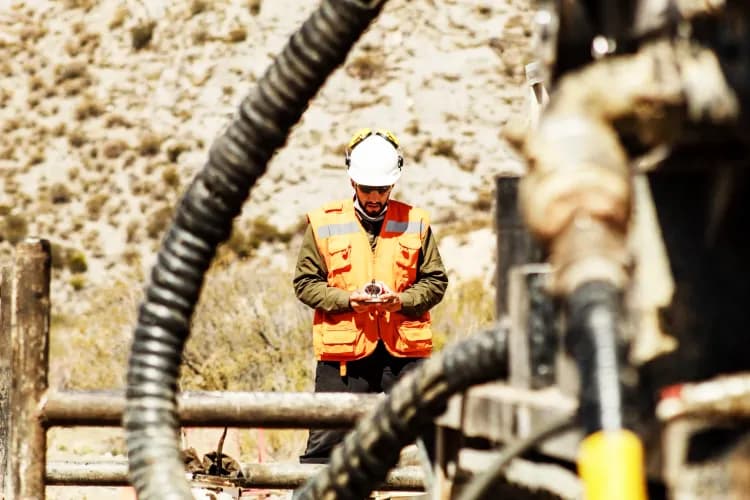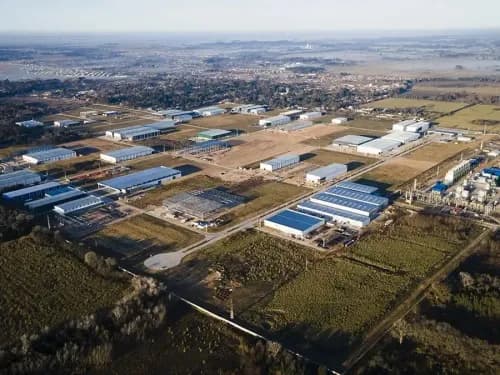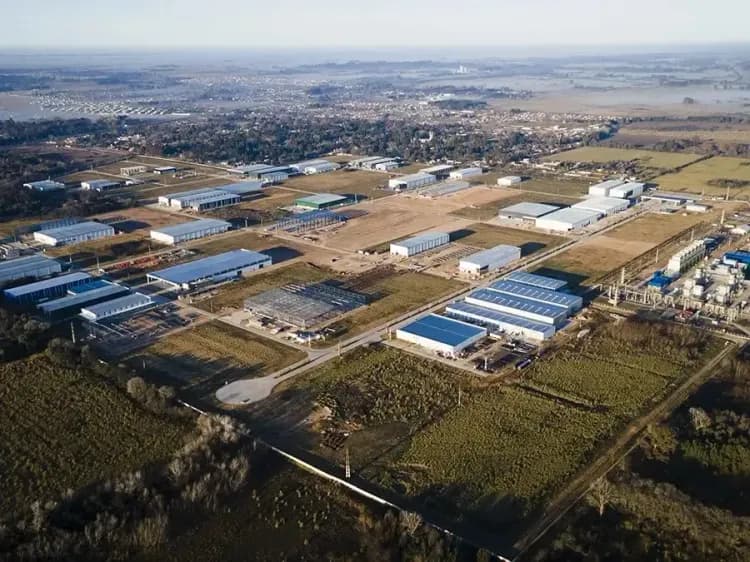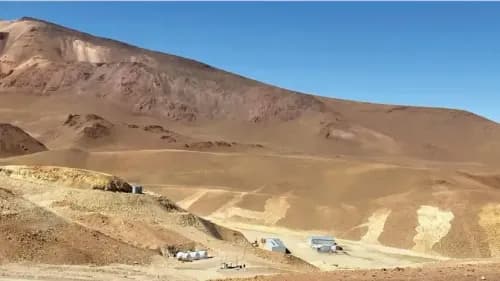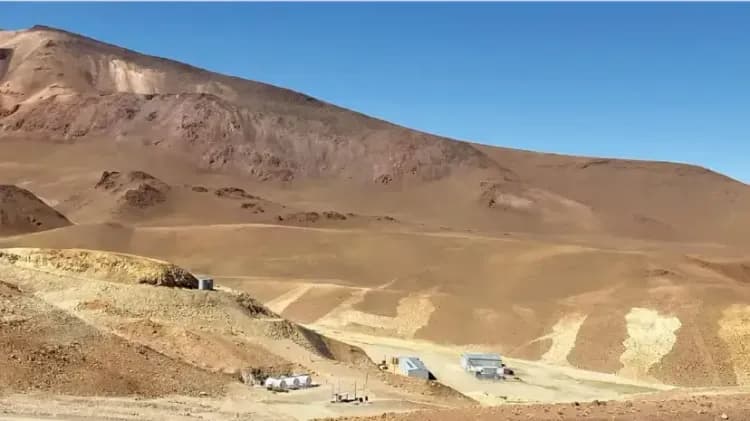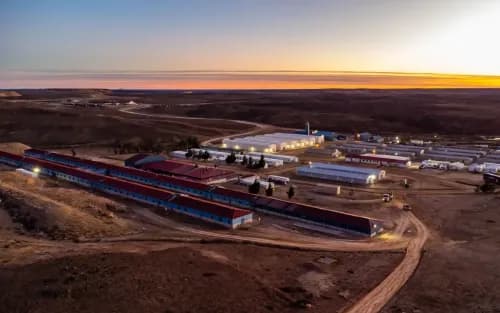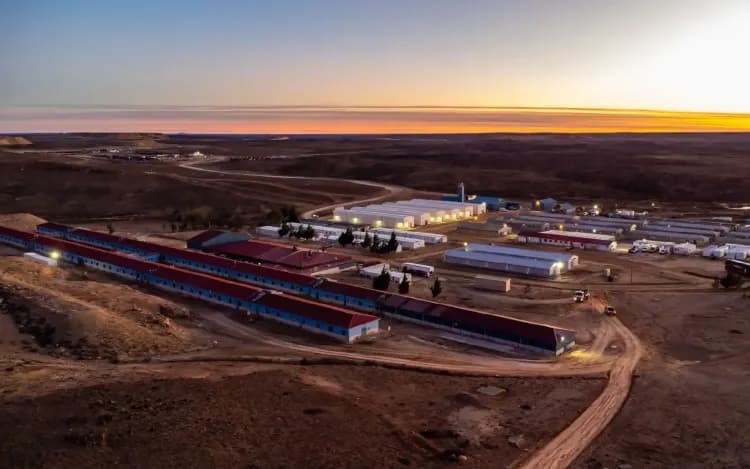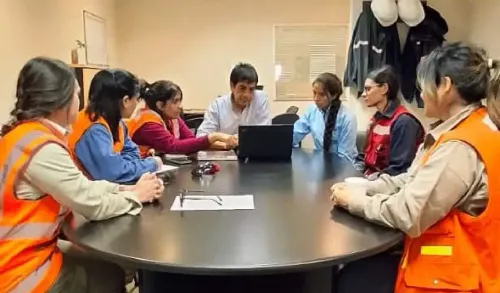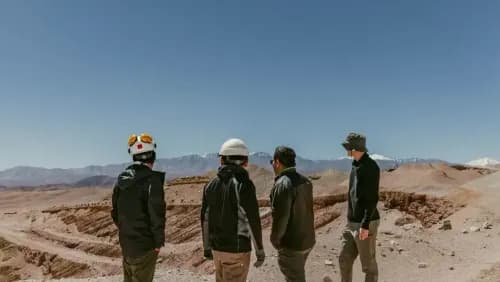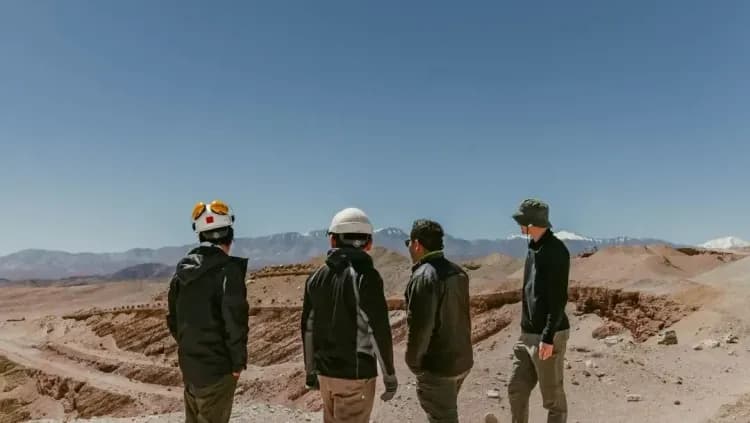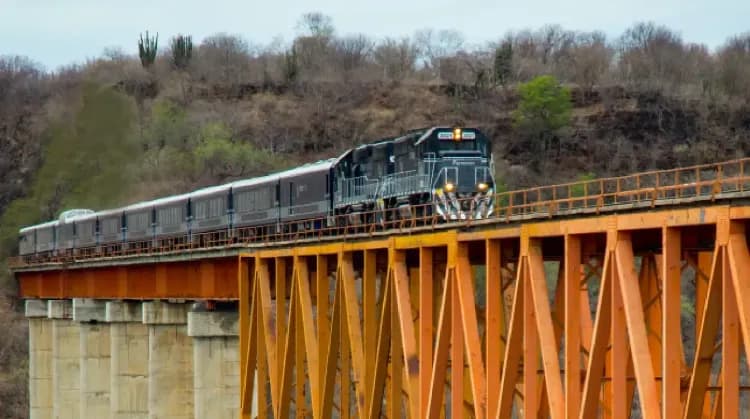Todd Williams, Managing Director of Unico Silver, discusses the Australian company's projects in the province of Santa Cruz.
By Panorama Minero
Why is Unico Silver interested to invest in Argentina?
Unico Silver is in Argentina since 2016 and the reason why we came to Argentina is because we thought that this country was a place that had huge geological potential and that it was very misunderstood by investors, particularly Australian investors.
After six years of being here in Argentina looking at projects, we did a deal on the Pinguino asset with Austral Gold. We were in the right place at the right time and that allowed us to do the deal with Pan American Silver on Joaquin. Argentina had a huge opportunity and was poorly understood by investors. Unico Silver acquired the projects that we think we need to build a world-class silver portfolio.
There are a number of trends: single asset silver miners with high quality assets –those that can produce silver in the next say three years- are all being acquired by larger silver companies. Also, we see a lot of political uncertainty in Mexico, and companies are looking at countries like Argentina and Bolivia as the next opportunity for new silver production and new silver companies.
Our portfolio includes Joaquin and Cerro Leon, the last one the consolidated Sierra Blanca and Pinguino vein field: we saw potential to put together a project of that scale so we could see that we had the portfolio to generate five to seven million ounces of annual production.
Do you think the silver ounce price is still sustainable in levels like those seen in recent weeks?
If we look at the silver to gold ratio, I think that clearly points to the fact that there's a lot of opportunity. Even today it's still very high, sitting around 90-95 to 1. Even if we just go back, the average over the last 20 years, about 80 to 1 or 70 to 1 we are still talking a lot of upside in the silver price. I think one thing that is becoming very clear is that people are starting to place higher silver prices into their NPV calculations, so for example four recent mine transactions – Las Chispas (Silvercrest), Los Gatos (Gatos Silver), Juanicipio (MAG Silver), Vares (Adriatic Metals)- all were sold at NPVs or asset valuations double what is suggested using today's silver prices. This shows that a lot of the big mining companies, for example those like Pan American Silver are using higher silver prices in their own internal estimations.
What are the Plus 150 and Beyond 300 Development Strategies?
I think the capital markets are very open and amendable to financing juniors like Unico Silver: we have raised A$55 million in 12 months, which is a huge amount for exploration in Argentina. We presented our corporate strategy to investors in May, and explained exactly where we plan to go and how we plan to get there and so we've developed this Plus 150 and Beyond 300 strategy.
We have very high grade oxide mineralization at both assets. At Cerro Leon the oxide mineralization is about 50% higher in grade and has half the strip, so that basically means that it is a very high value product whose material can be travelled by truck. And then at Joaquin we have a very large resource, which is lower grade but it is large, and so our sort of vision for the project is that the Plus 150 development strategy really captures our vision around developing the oxide at Joaquin and improving that by trucking the oxide to from Pinguino to Joaquin.
Recently, on 23th September, we announced a new Mineral Resource of 162 Moz silver equivalent at Cerro Leon that can fit within a single flow sheet, so we could process it within a single plant, but then we also recognise that at Pinguino there's a huge opportunity with the deeper sulphide mineralization. That requires more work, but represents an opportunity for us to double our aspirations around how much silver we can produce. If we can continue growing the total resources to more than 300 Moz silver equivalent, then we will have enough sulphide mineralisation to justify either expanding the plant building a standalone plant at Cerro Leon.
It gives us options, and more importantly gives opportunity to show to our investors. Whatever our development plans are today is just the beginning for the company.
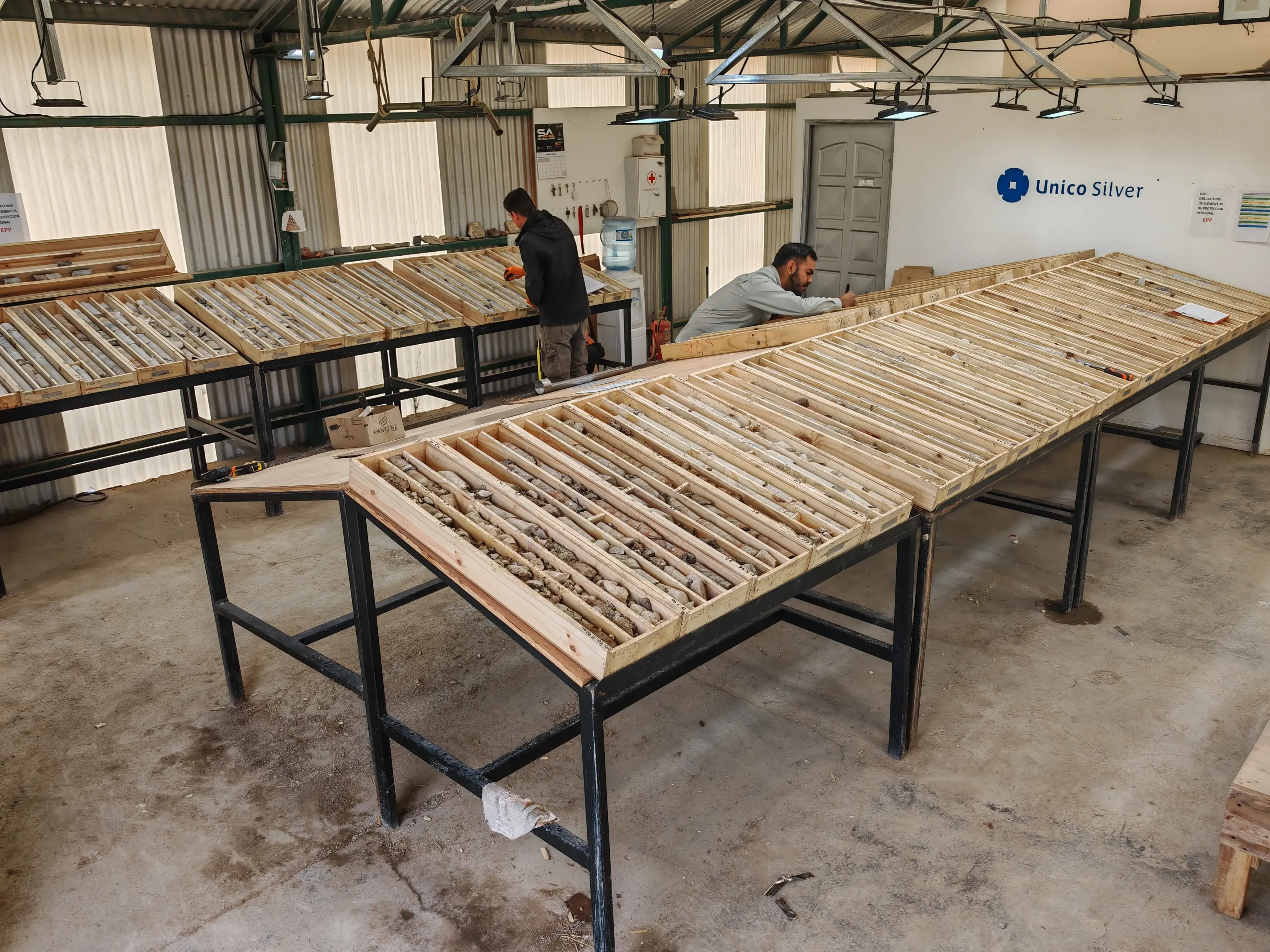
Historically, Pinguino showed indium mineralization. Could the project be more attractive in terms of CAPEX?
The priority for us is to put together a mining plan for the Plus 150 oxide mineralization which would obviously sit outside of any development opportunities to sell indium because that would be through producing a lead-zinc-silver concentrate which would be shipped to a smelter. Now, if we look at say for example the relationship with Gatos Silver mine -a 70-30 joint venture, the minority 30% being a Japanese smelter, one of the largest producers of indium globally- I guess what that shows is that there's a lot of foreign interest particularly from Japanese smelters, to get access to high quality lead-zinc concentrates with indium as a by-product if that makes sense.
The quantity of indium in the concentrate that was produced through the metallurgical test work is very attractive: the grades are sort of half that of the silver in the concentrate, which means that it, has some value. It's hard to quantify that value until you have an agreement from the smelter, because some of the smelters will pay a lot for it in good times or will pay almost nothing in bad times. I think the way we see it is it has strategic value and what we see is hopefully, in the future we can show that we can develop a very simple conventional oxide plant at Joaquin with a very large sulphide resource at Pinguino, which may have be some interest to third-party smelters. And that just opens up a potential funding route for future CAPEX future developments.
If we take in consideration both projects, can we talk about a complex metallurgy?
If we look at the consolidated Cerro Leon and Joaquin projects’ geology is fantastic: everywhere we drill we make new discoveries. At the geotechnical aspects, we can see that there are a number of open pit operations in Santa Cruz that are not constrained by the geotechnical aspects of the project. It is very possible to have a multi pit project and then if we look at the hydrology, there's water everywhere in Santa Cruz. And also, if we look at the permitting process there's a very clear pathway for permitting and building a mine in the province.
So, if you're looking at all the aspects that could make a project high risk or low risk the only vertical that we see which creates some uncertainty in the development scenario is the metallurgy because in silver deposits can be very complicated: you have a mix of oxide transitional sulphide mineralogies and they all recover different for different processing techniques.
Is it possible to process the mineral at a neighbor operation?
The reality is that at Cerro Leon we have a very limited opportunity for discovering more oxide. So we have a very high grade oxide resource at Cerro Leon.
It starts at surface, so there's almost no strip, we expect will be sort of three to one the grades which is very manageable and the grades almost double that at Joaquin. If you have a resource that's twice the grade and half the strip then it's obviously a very high value product, and when you estimate trucking costs for anywhere in Argentina the costs equal about 20 grammes silver or US$20 using a US$30 silver price: as long as the grade is 20 grammes higher at Pinguino it is profitable to truck the ore to Joaquin. So, we know basically what we have in the oxide at Pinguino it's not getting bigger or smaller.
But the sulphide is huge. It goes down 400 vertical metres and when we talk about developing a plant at Cerro Leon, it's mainly we're doing the work on the sulphide, the metallurgy, etc. to justify building a plant at Pinguino. But for now the sort of base case or our base assumption is that we're building a plant right here in the middle of Joaquin and that's going to be a central processing facility with a conventional cyanide leach plant and any of the oxide from Pinguino will go there, but we think the percentages of ore from Joaquin to Pinguino - Cerro Leon would be 70/30 or 70% from Joaquin 30% from Cerro Leon.
Which are the next steps for both projects?
One of the benefits of acquiring these projects from Pan American Silver and even Argentex is that they have already completed their PEAs (Preliminary Economic Assessment). In the case of Pinguino project, it was done in 2011-2012. On a very small resource, but what's important is all the work that went to that document: hydrology, geotechnical, and all the indirect disciplines that need to go into the PEA.
And it was the same with Joaquin: Pan American Silver published a pre-feasibility study in 2017 on walking to build the La Morocha underground mine: they did a very comprehensive geotechnical, hydrological and metallurgical programs, a fantastic database of all of the technical aspects that need to go into a Prefeasibility Study (PFS), and our plan at the moment is to put together a resource that we think is consistent with our vision for the project in terms of the potential size that we want and then move into a PEA. We need to be in a position where we've got a PFS by the time we need to qualify for the RIGI, which is June next year.
With the recently published mineral resource at Cerro Leon, the goal is to have a second resource which captures all of the drilling that we're doing now in February or March next year and that will be very quickly followed by a Scoping Study which will basically be the first financial model of the project. But then in the meantime, we've already started all of the long lead items required for a PFS, like more detailed metallurgy. Our goal is to deliver the PFS by the midpoint of next year.


